Japan’s public transport system is ranked as one of the best in the world. In particular, Tokyo’s public transport network stands out locally and internationally for being incredibly well-connected, efficient, and punctual.
If you’re unsure of how to get around Tokyo, or if you struggle with navigation, fret not. This handy Tokyo public transport guide contains all the essential basics of Japan’s public transport network and commuting around Tokyo.
As someone who has travelled to Tokyo thrice, I can attest that Tokyo’s public transport system is truly impressive. I was able to commute around the city easily without encountering any major difficulties (and without breaking the bank). By the end of this article, you can be confident enough to navigate Tokyo public transport and get around the city without getting (too) lost!
Also read: 12 Best Day Trips From Tokyo & How to Get There
Top ways to commute in Tokyo
1. Train and subway
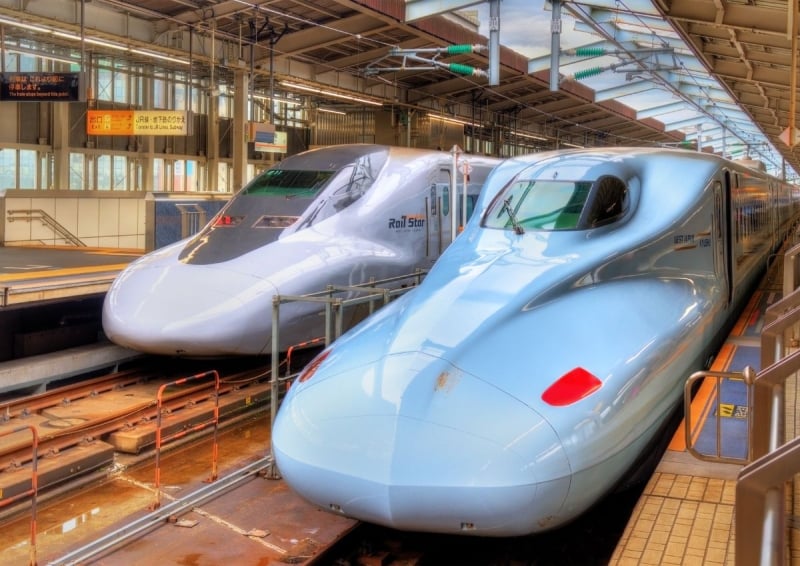
Image credit: Leonid Andronov via Canva Pro
Commuting via railway is famous as the top-recommended mode of public transport in Tokyo for good reason. Japan’s railway transport system, comprising train and subway networks, is one of the most well-connected and efficient in the world. It provides convenient access to many places across the country. Not to mention, it’s incredibly convenient: in the capital, most places will have at least one train or subway station located within walking distance. Moreover, commuters enjoy an exceptionally high frequency of train and subway carriages in Tokyo.
It can be confusing for tourists because there are many train and subway operators in Japan — the main train operator is Japan Railways (JR) and the two subway operators are Tokyo Metro and Toei Subway. However, don’t worry, because the whole railway system is well-integrated and interlinked across many stations.
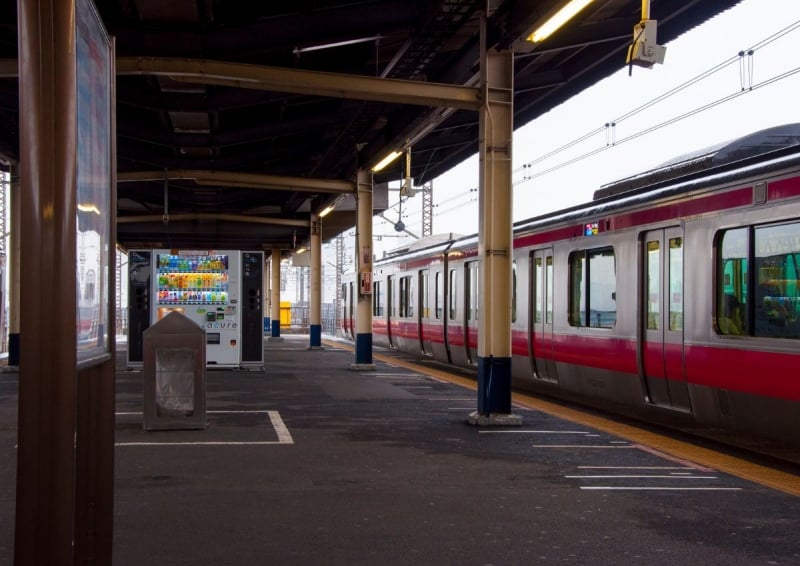
Image credit: Wang wu shoung 的影像 via Canva Pro
For visitors to Tokyo, one train line you’ll probably use at least once is the JR Yamanote Line. As Tokyo’s most important train line, this circular line conveniently connects many important city centres, including Shibuya, Tokyo Station, Ueno, Shinjuku, Shinagawa, and Ikebukuro. It’s one of the most convenient routes to commute around Tokyo.
Train and subway fares really vary depending on how far you travel. If you’re travelling within Tokyo, you can generally expect to pay between ¥140 to ¥550 (S$1.25 to S$4.91) for a single journey.
Pros:
- Train and subway stations in Tokyo are extremely accessible by foot.
- They are fast and reliable means of commuting. In Tokyo, you’ll enjoy an especially high frequency of train and subway carriages. especially compared to buses
- Taking the train or subway is much more affordable than taking a taxi.
- Railway transport is probably the easiest type of Japanese public transport to navigate. If you get lost, you can easily head to the control station and ask for help. In Tokyo, a lot of staff in the railway control stations speak English!
Cons:
- While Tokyo is well-connected via train and subway, there will always be a handful of outlying places that aren’t easily accessible via railway transport. In that case, you might have to walk a long distance from the train station to your destination.
Tips:
- Before embarking on your journey to your desired destination, map out your train or subway route. This way, you can find the most time and cost-efficient routes. There are so many possible routes — so choose wisely! You can use navigation apps to check out different routes. Google Maps and Japan Official Travel App are some top-rated navigation apps.
- There are different types of trains in Japan, such as the Express (急行), Semi-Express (準急), Rapid (快速), and Limited Express (特急). Express trains skip several stations. Before boarding the train, be sure to check that they’ll pass by your stop!
- If you don’t want the hassle of buying single-trip tickets for every journey, we highly recommend buying a prepaid transport card (called “IC cards”) to make cashless payments for public transport. Suica, Pasmo, and Icoca are the most commonly used IC cards.
- At train and subway stations, listen out to hear which stop you’re approaching. The name of the stop is usually broadcasted over the loudspeaker in Japanese and English. This is especially helpful when figuring out when to alight if you’re unfamiliar with the Japanese script.
- If you’re terrified of squeezing with the crowd, avoid taking the train during rush hours (7am–9am and 5pm–7pm) as it can get extremely packed!
Also read: Tokyo Rush Hour: 10 Tips to Help You Survive Train Rides
2. Bus
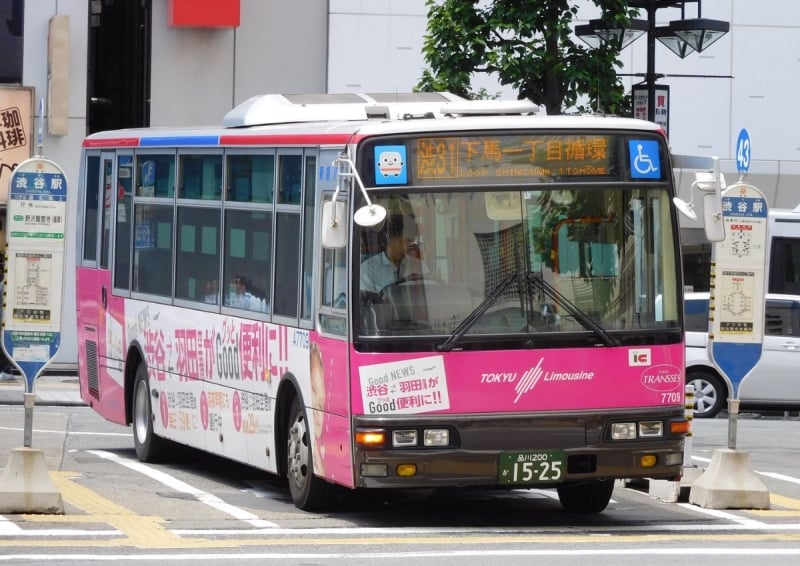
Image credit: Vasconium | Flickr
Another good way to commute around Tokyo is to take the bus. Tokyo is well-connected not only via railway transport, but also by bus! Taking the bus is a good way to travel to outlying places that aren’t easily accessible via railway transport. This will bring you to your destination more directly.
There are dozens of bus operators that service buses within Tokyo. Generally, a bus ride within Tokyo costs a flat fare of ¥210 (S$1.88) for adults and ¥110 (S$0.98) for children.
Pros:
- Buses in Tokyo are very affordable. They cost less than taking the train or subway, and are way cheaper than taking a taxi.
- When travelling to outlying places in Tokyo that aren’t easily accessible by railway transport, buses can bring you more directly to your destination.
Cons:
- Buses are quite tricky to navigate if you aren’t well-versed in the Japanese language. At the bus stop, you’ll need to read the signboards to verify that you’re headed in the right direction. And on the bus, you’ll have to keep your eyes peeled and listen for announcements as it can be hard to figure out which stop you’re at!
- Buses that shuttle between tourist hotspots are often extremely crowded. Be prepared to stand for an extended period of time in a stuffy environment. Also, this might not be the best idea for anyone who’s prone to motion sickness!
- The frequency of buses varies quite a bit, depending on your destination.
Tips:
- Use navigation apps to check the bus frequency before you decide to wait for a particular bus. Not all buses come frequently!
- Check the stops along your bus route before boarding so that you can estimate when to get off. You don’t want to miss your stop!
- While you can use cash to pay for your bus fare, it’s much easier to make cashless payments using an IC card. It’s quite a hassle to dig out small change to pay your fare on a crowded bus. You’ll definitely feel less stressed during your bus journey.
Other modes of transport to get around Tokyo
3. Taxi
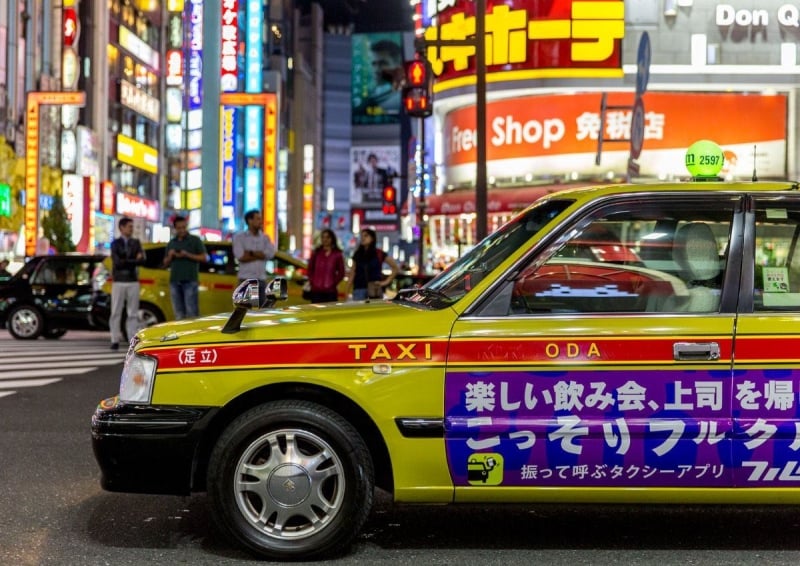
Image credit: Franck Michel | Flickr
Tokyo public transport is already fantastic. However, if you’d like an ultra-comfortable ride in style to your destination, taxis are another mode of transport you can consider!
To hail a taxi in Japan, you can flag one down or wait at a taxi stand. There are usually taxi stands in front of train stations. Alternatively, you can call a taxi using your handphone, a taxi app, or even request your hotel reception to call a taxi for you. The GO taxi app is the most popular in Japan.
To verify that a taxi is vacant, look out for the sign on the dashboard. A red sign showing 空車 (“vacant car”) indicates that the taxi is vacant, and a green sign showing 賃走 (“occupied”) indicates that the taxi is occupied.
Pros:
- Taxis enable you to commute around Tokyo in the wee hours when buses and railway transport aren’t running.
- Taxi rides are extremely comfortable.
- Taxis can bring you directly to places in Tokyo that aren’t easily accessible by railway transport or buses. You won’t have to walk much.
- Taxis are a good option if you need to travel long distances with young children or elderly.
Cons:
- Be ready to spend more money if you take a taxi, because taxi fares in Japan are considered among the most expensive in the world! Generally, the first two kilometres costs ¥730 (S$6.54), and each additional kilometre costs ¥320 (S$2.87). Each hour of wait time costs ¥3,085 (S$27.63).
Tips:
- If you pay for your taxi fare using cash, try to use smaller bills such as 2,000-yen or 5,000-yen notes so that it’s easier to receive change.
- To avoid any confusion, it’s recommended that you give your taxi driver the full address of your intended destination.
Fun fact: Ride-hailing services are generally not allowed in Japan, but starting April this year, ride-hailing (of non-taxi vehicles) will be allowed in some regions of Japan at certain timings. Keep a lookout for that!
Also read: 10 Family-Friendly Airbnb Apartments in Tokyo
4. Cycling
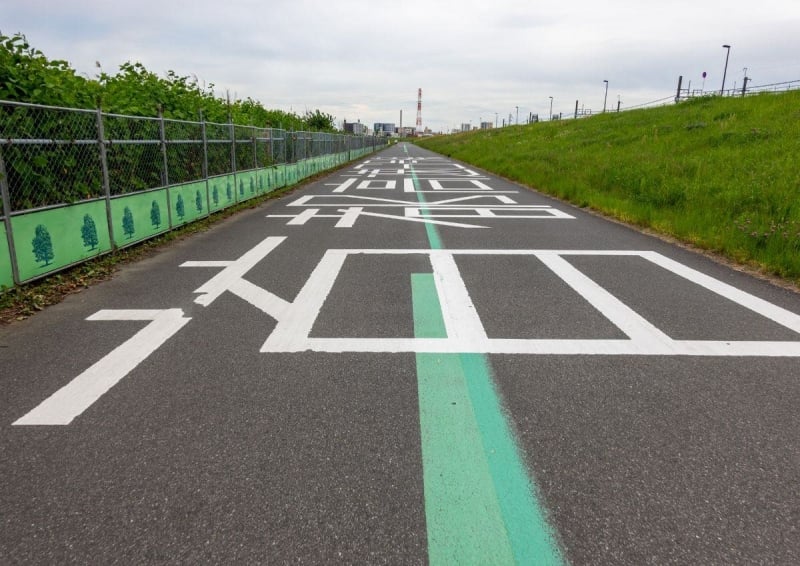
Image credit: kawamura_lucy via Canva Pro
The Japanese love their bicycles, and it’s not hard to see why. Japan is very bicycle-friendly, so cycling is a very popular mode of transport.
Cycling to get to different places in the city is a fun and viable alternative to taking Tokyo public transport. You can cycle along Tokyo’s well-maintained bike paths, or along the roads. You may also cycle on sidewalks that permit cycling within the speed limit of 10kph. (In reality, you’re likely to see many locals speeding along the sidewalks!)
Bicycle rental and bike sharing are very common in Japan. For tourists, we’d recommend you try Hello Cycling, which is a foreigner-friendly bicycle sharing service in Japan. Hello Cycling covers much of Tokyo’s neighbourhoods and charges only ¥70 for every 15 minutes of bicycle usage. Alternatively, you can pay ¥1,000 for 12 hours of unlimited use. You simply have to download the Hello Cycling app on your smartphone and register. After that, you can reserve a bicycle at a particular Hello Cycling station, or check which Hello Cycle stations have available bicycles. When you’re done using the bike, you can drop it off at any Hello Cycling station!
Pros:
- Cycling is a great way to avoid jostling with the crowds on Tokyo public transport.
- You’ll get to enjoy Tokyo’s scenic sights while cycling around.
- Cycling in Japan is an affordable means of commuting.
Cons:
- Your cycling plans may be affected by extreme weather such as strong gale or rain.
- If you’re heading to a faraway destination, you may spend significantly more time getting there by bicycle than by Tokyo public transport.
Tips:
- Check weather conditions before cycling.
- Keep left when cycling.
- Cyclists are required to switch on headlights and rear lights when cycling at night.
- Avoid leaving your bicycle unattended in no-parking zones, or you might have your bike towed away!
5. Walking

Image credit: f11photo via Canva Pro
At some point, you’ll have to take your very own Bus 11 — that is, walking on your own two legs. Consider walking from your current location to your next destination (and burn off some holiday calories at the same time)!
Pros:
- You’ll save a lot of money because walking is free. Taking Tokyo public transport is affordable, but it’s still more expensive than many other Asian countries. It can get slightly pricey if you’re making multiple trips using Tokyo public transport — which makes walking the perfect way to cut costs! In fact, many train and subway stations in Tokyo are located within walking distance from each other.
Cons:
- If your next destination is far from your current location, walking there requires much more time and energy than taking public transport there.
- If you’re walking outdoors, you may be subject to not-so-ideal weather conditions.
Tips:
- Use navigation apps to estimate your walking distance before you decide to walk to your next destination.
- If you’re walking outdoors, check weather conditions before you start walking.
Helpful tips for taking Tokyo public transport
For the best experience using Tokyo public transport, here are a few general tips that’ll really make your life a lot easier in Japan.
1. Have a translation app on your smartphone
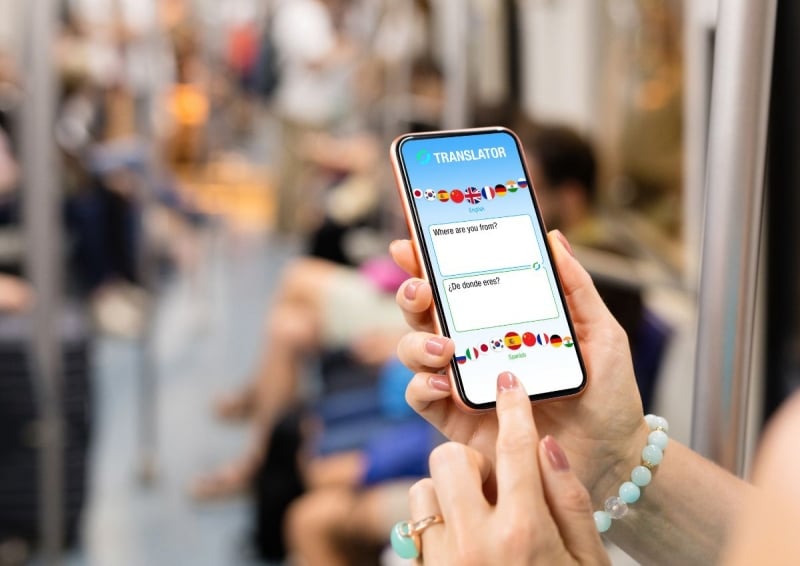
Image credit: grinvalds via Canva Pro
If you meet a local and wish to ask them for directions or assistance, not everyone can fluently respond to you in English. Translation apps are therefore extremely helpful for effective communication. You can try Google Translate and Waygo, which are among the most popular translation apps!
2. Bring some cash with you
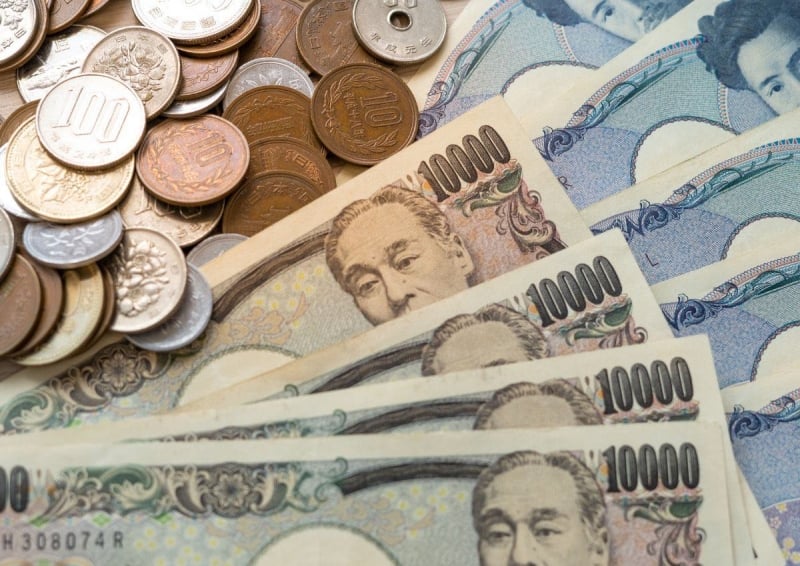
Image credit: shisuka via Canva Pro
We also encourage you to bring some Japanese Yen with you in cash. While cashless payments are increasingly common and available across Japan, some purchases can only be made with cash. For example, the Pasmo IC card can only be purchased using cash from the vending machines.
3. Do your research!
Finally, it’s helpful to do detailed research on the places you wish to visit in Tokyo before arriving! This will help you source for the most time-efficient and cost-efficient routes to your desired destinations.
Also read: 10 Affordable Airbnbs in Tokyo for Budget Travellers
So, this Tokyo public transport guide has covered all the essential basics of getting around Tokyo. Say sayonara to any stress, and konnichiwa to a fun time exploring Tokyo!
Featured image credit: SeanPavonePhoto via Canva Pro




